After a long period of mismanagement, the United Kingdom’s dispersed national collections of photography have found a generous and stylish permanent home worthy of their quality. Deep within the Victoria and Albert Museum (V&A) in London, a new suite of four rooms designed by the joint team of Purcell and young practice Gibson Thornley, alongside existing space completed in 2019 by David Kohn, will hold the V&A’s photographic collection as well as newly acquired prints and negatives. “We are now up there with the Metropolitan, the Getty, and the Pompidou in terms of the size and significance of the collection,” says V&A Director of Photography Duncan Forbes. The design of the facility, now totaling seven rooms including galleries and a library, matches this new status and subtly expresses the curatorial intention to create a dialogue between past and present.
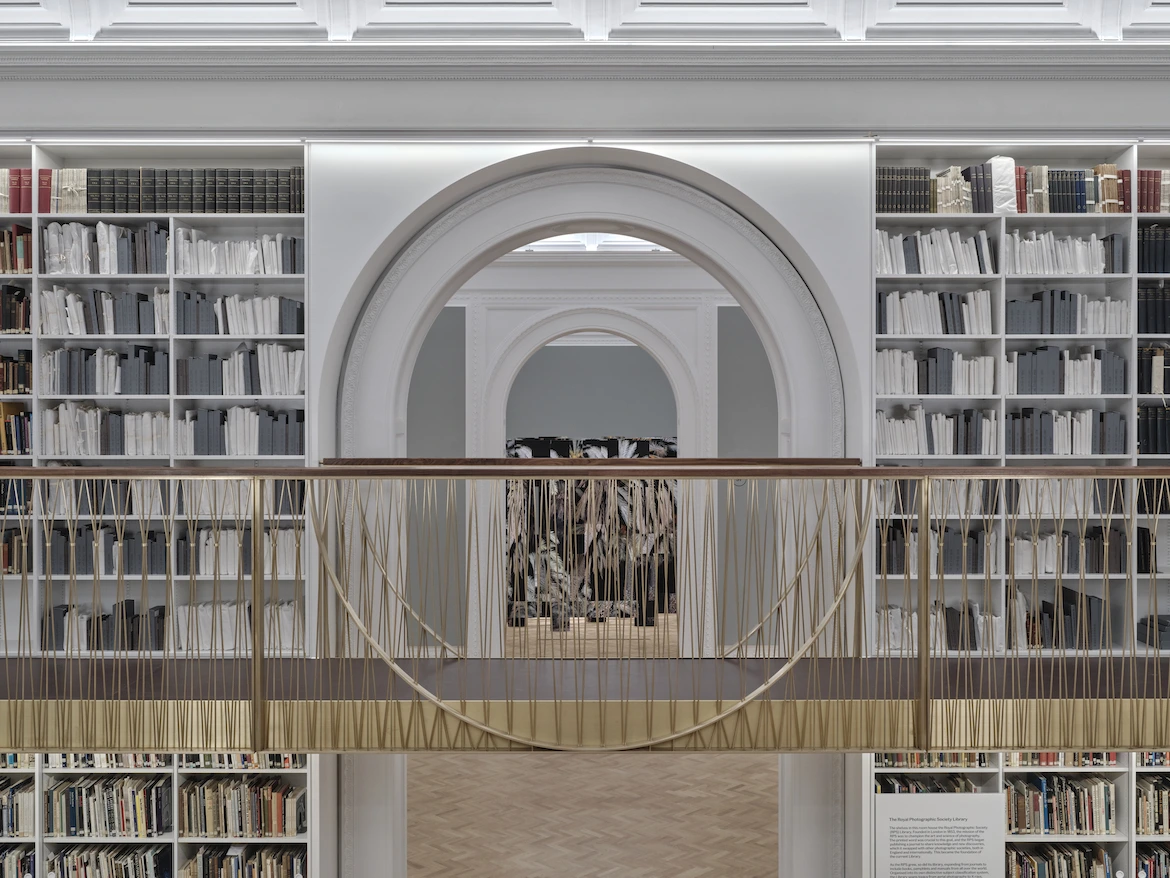
1
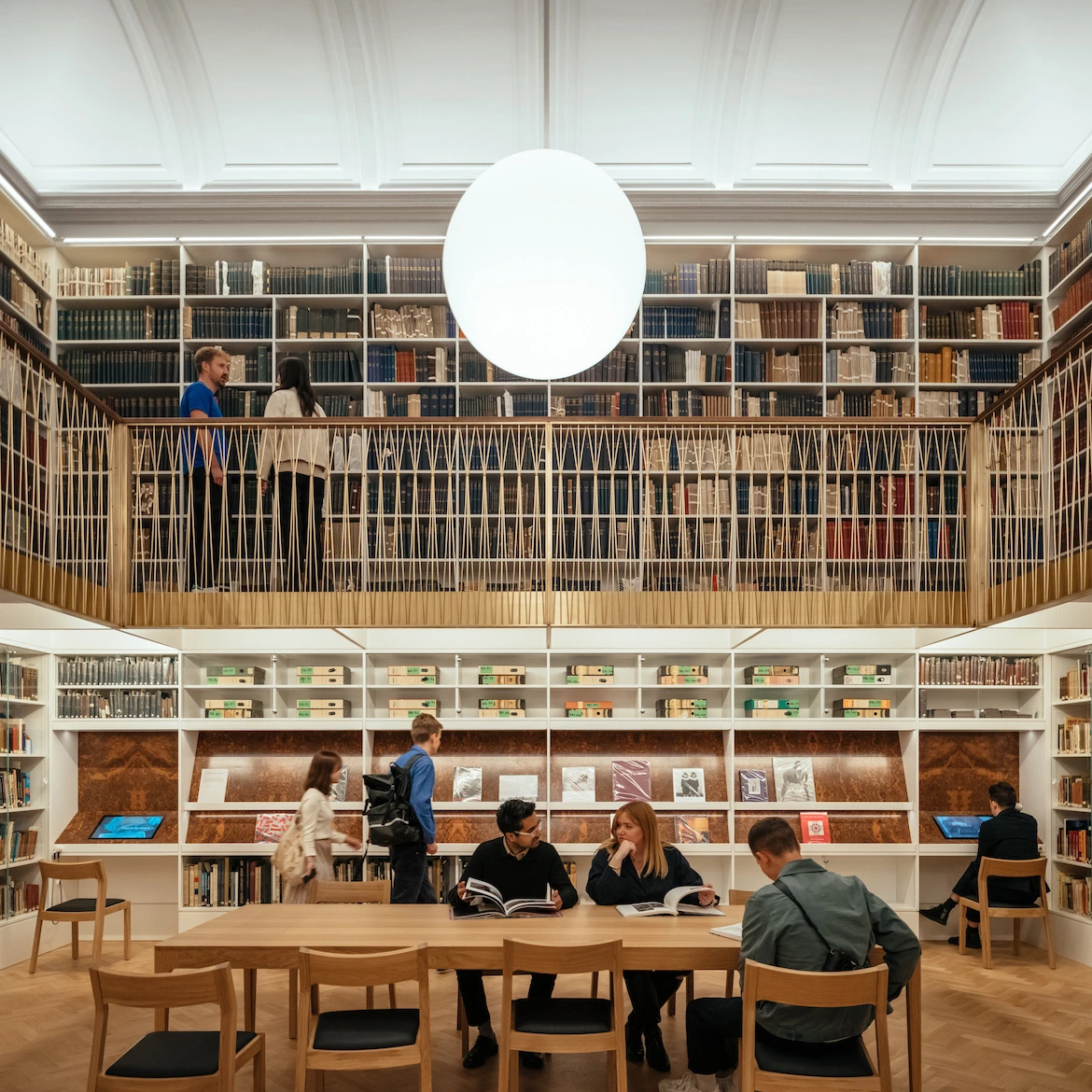
2
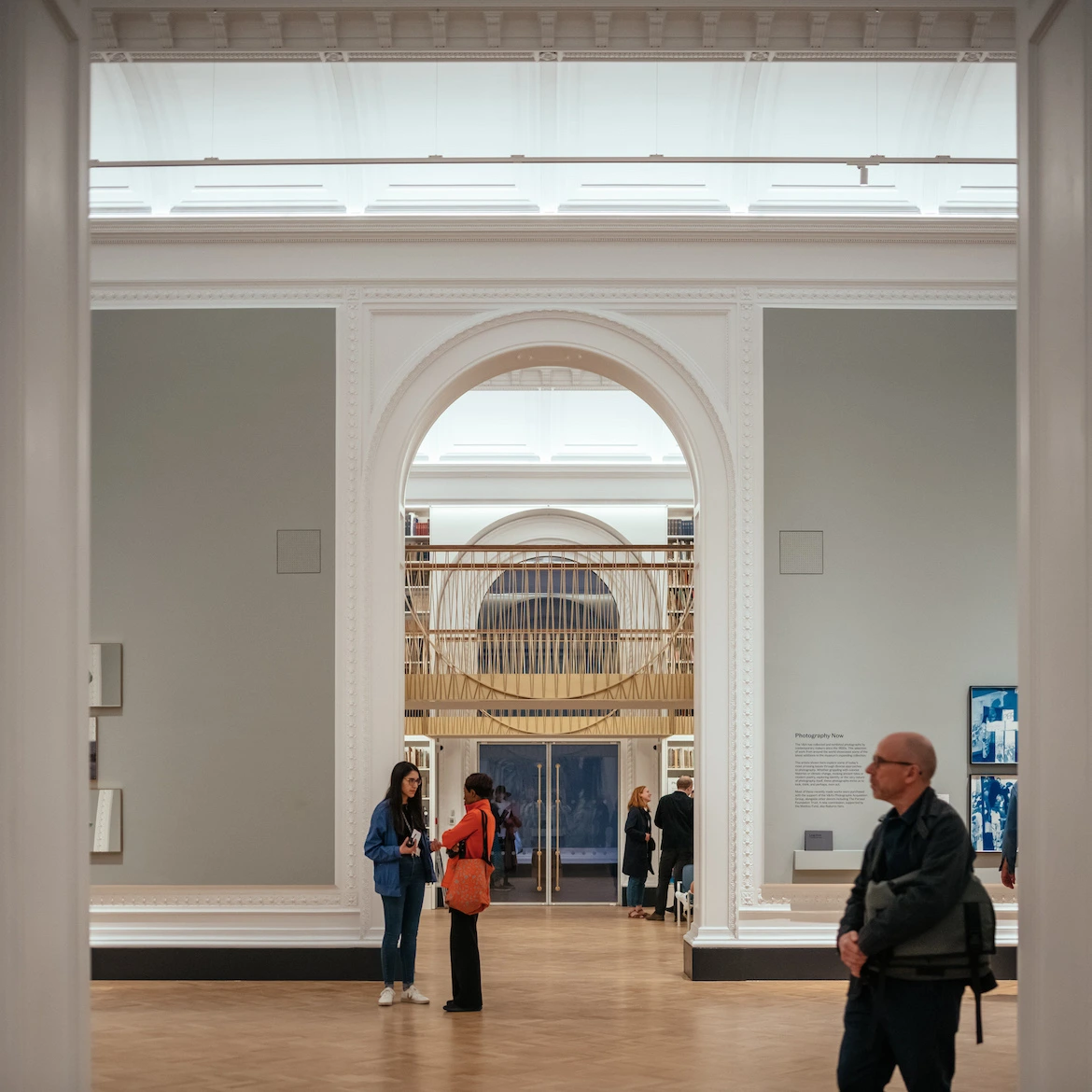
3
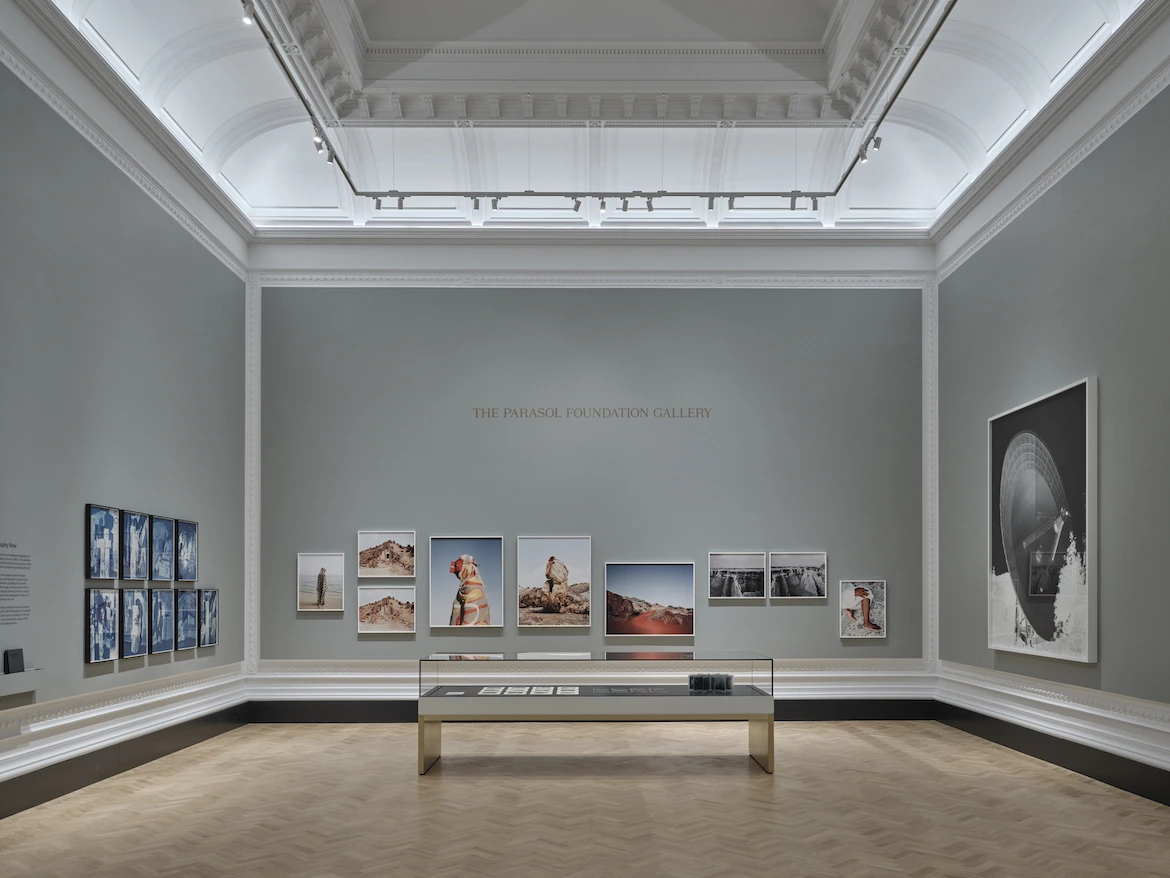
4
A prominent architectural feature of the new center is the library mezzanine walkway with bridges that feature balustrades fabricated from clasped brass rods (1,2,3); a new public gallery at the V&A Photography Centre (4). Photos © Thomas Adank (1,4), Jim Stephenson (2,3)
The V&A Photography Centre is situated at the northeast corner of the Grade I–listed museum complex, and was originally a suite of four painting galleries but more recently used as back-of-house and education spaces. Accessed through a bridged section of the third floor, visitors enter through a gallery dedicated to floor-to-ceiling video and photographic installations. To the south, two intact Kohn-designed galleries house the V&A’s historic collection. To the north, the new rooms open enfilade, connected by impeccably restored arched doorways.
First in the sequence is a library holding much of the National Photographic Society collection. Visitors are surrounded by floor-to-ceiling shelves filled with photography books, binders, and folios. The room also contains a key architectural intervention—a beautiful mezzanine made from a champagne-colored manganese brass alloy. Supported by a steel substructure of 28 posts, 12.6 feet in length and carefully attached to brickwork, the mezzanine and upper bookshelves align with divisions in the historic moldings on the upper walls. Wrapping the entire first space on three sides, the mezzanine is accessed by staff via a staircase at the west side of the library that sits behind a floor-to-ceiling bookcase made from metal-faced plywood. The underside of the walkways are, like the lower display cases on the east side of the room, inlaid with a veneer of rich, book-matched walnut.
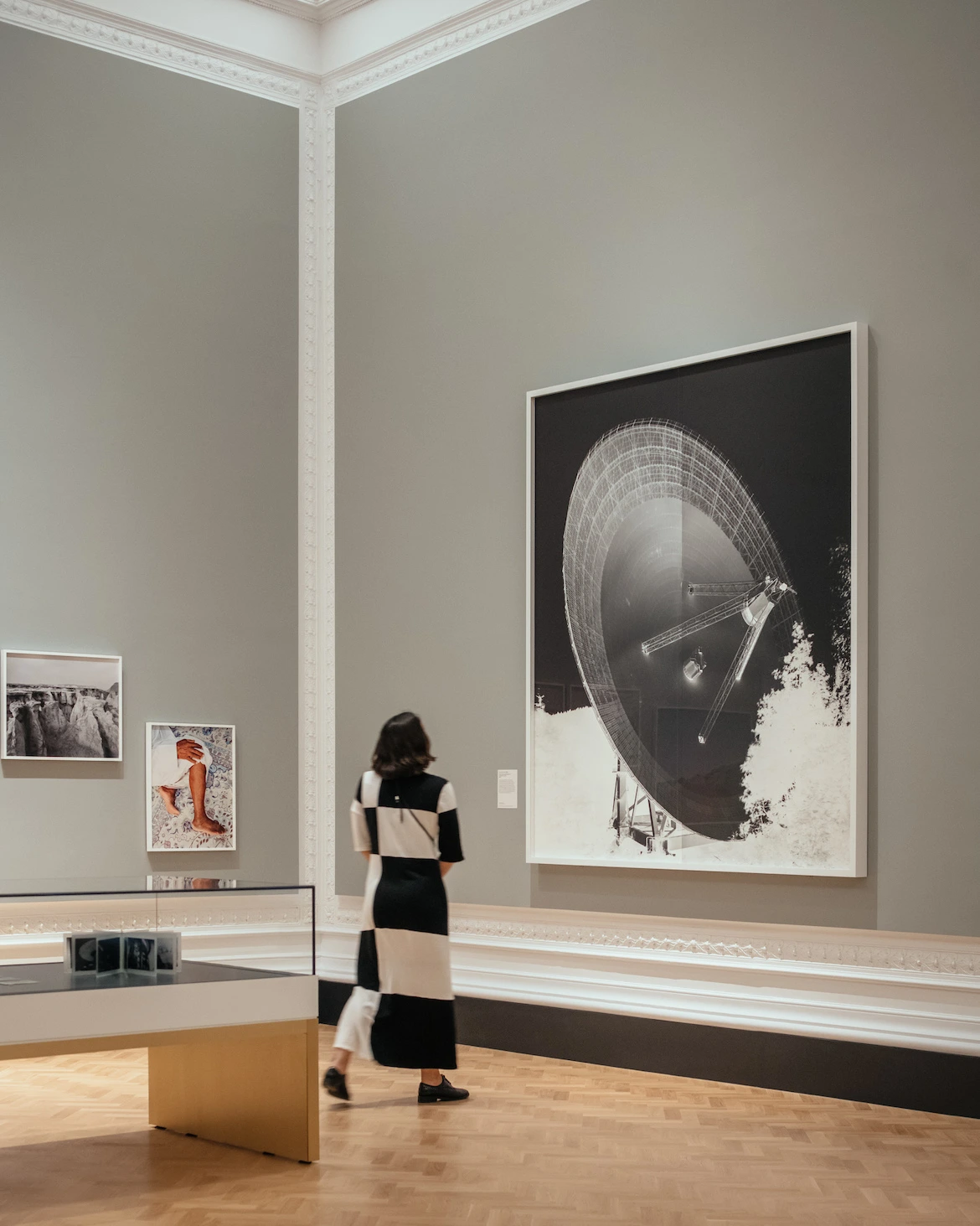
5
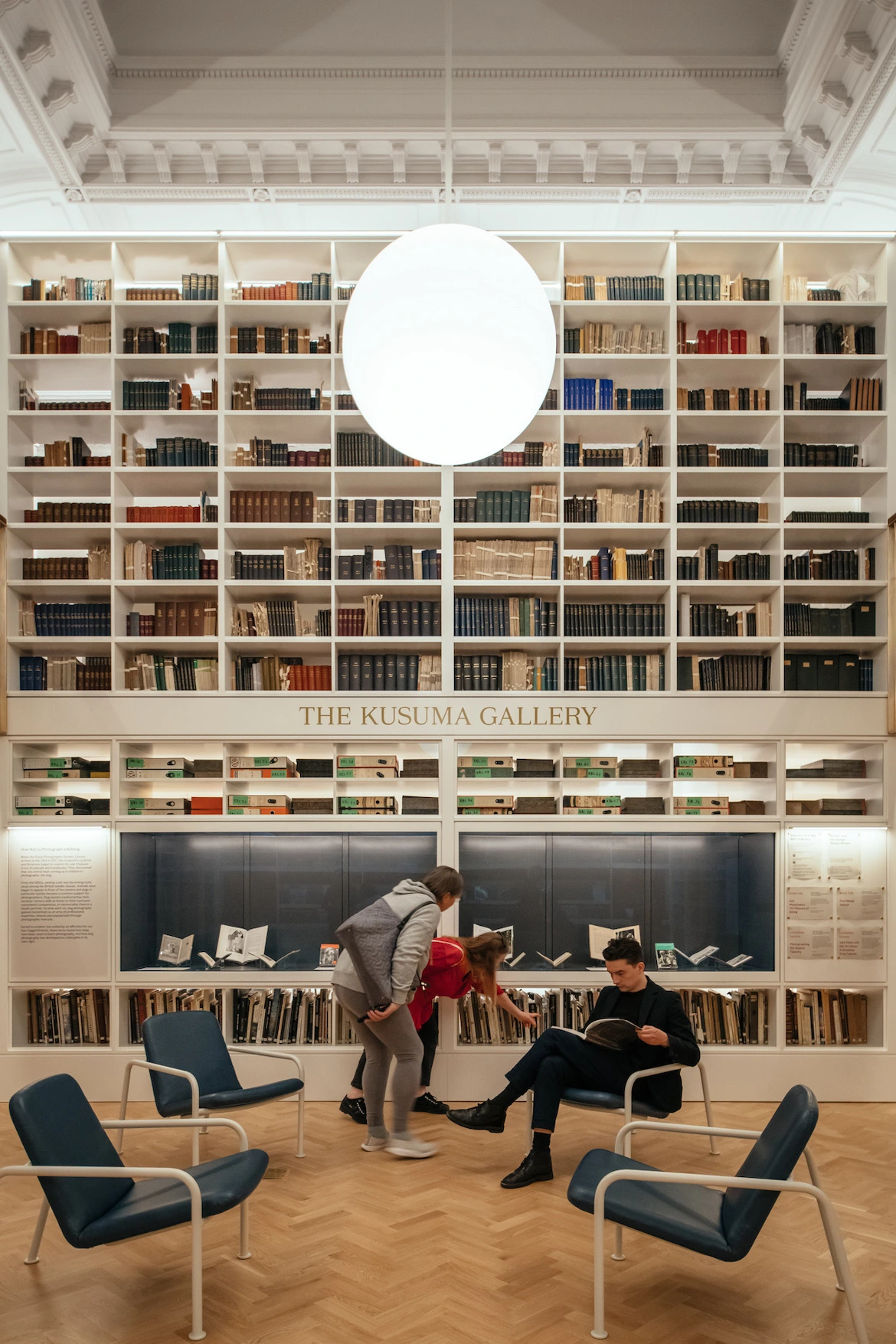
6
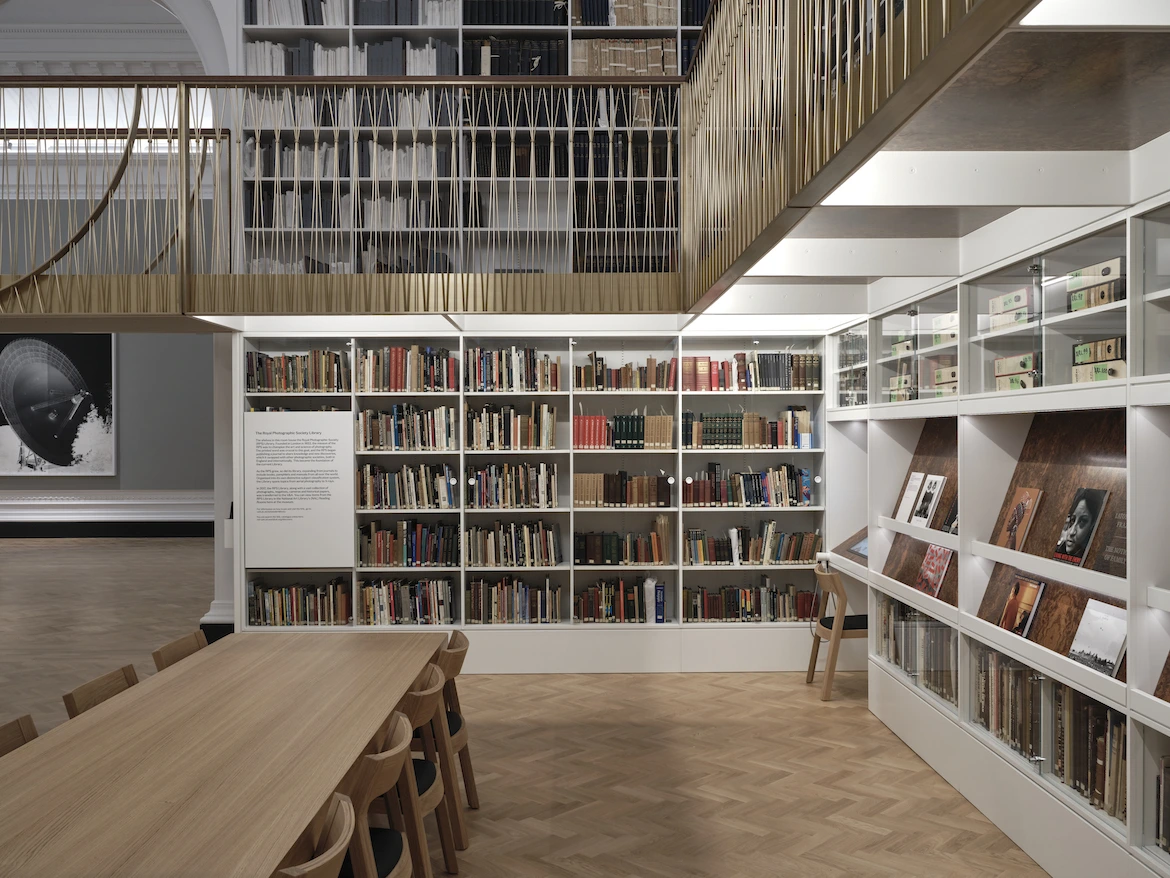
7
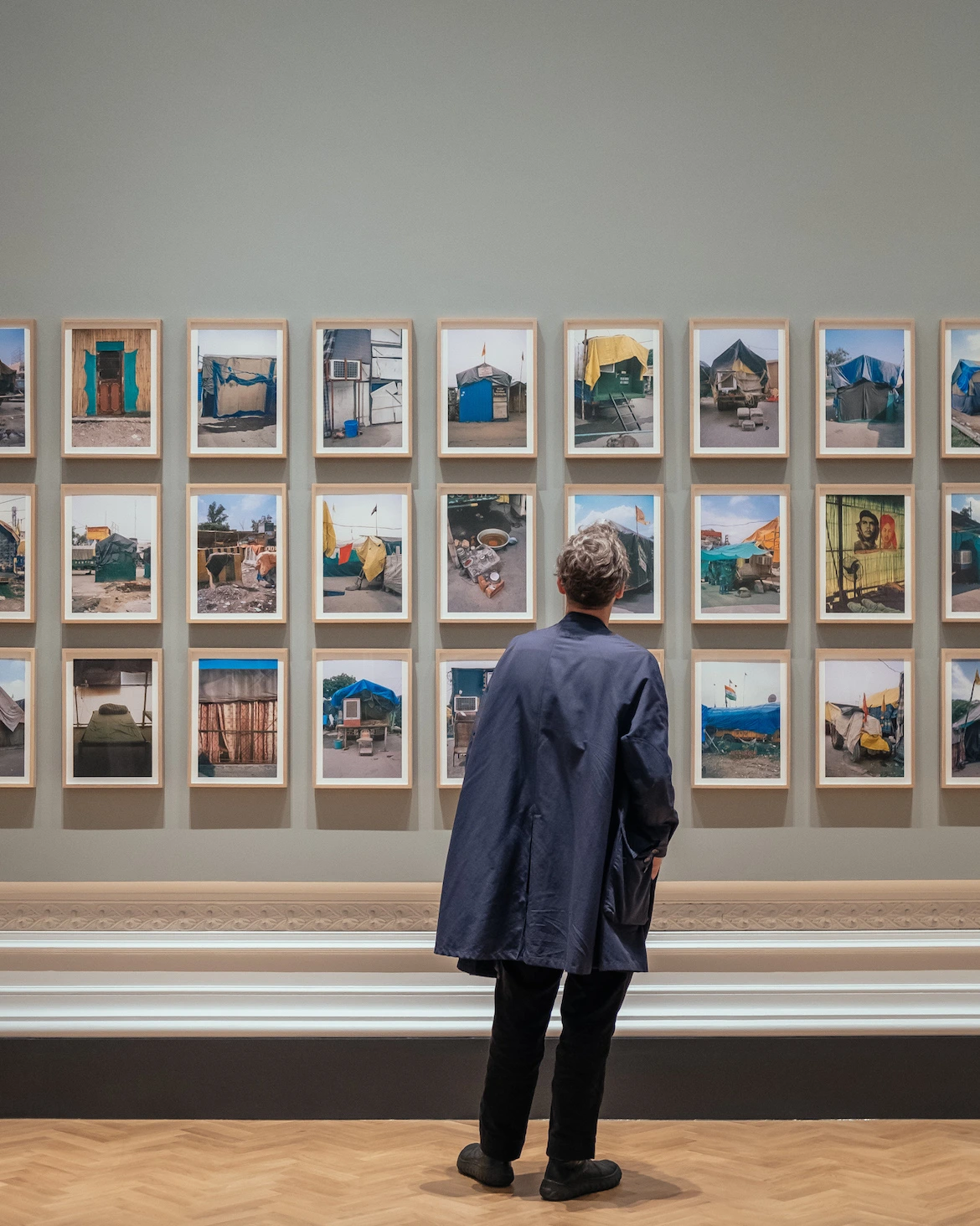
8
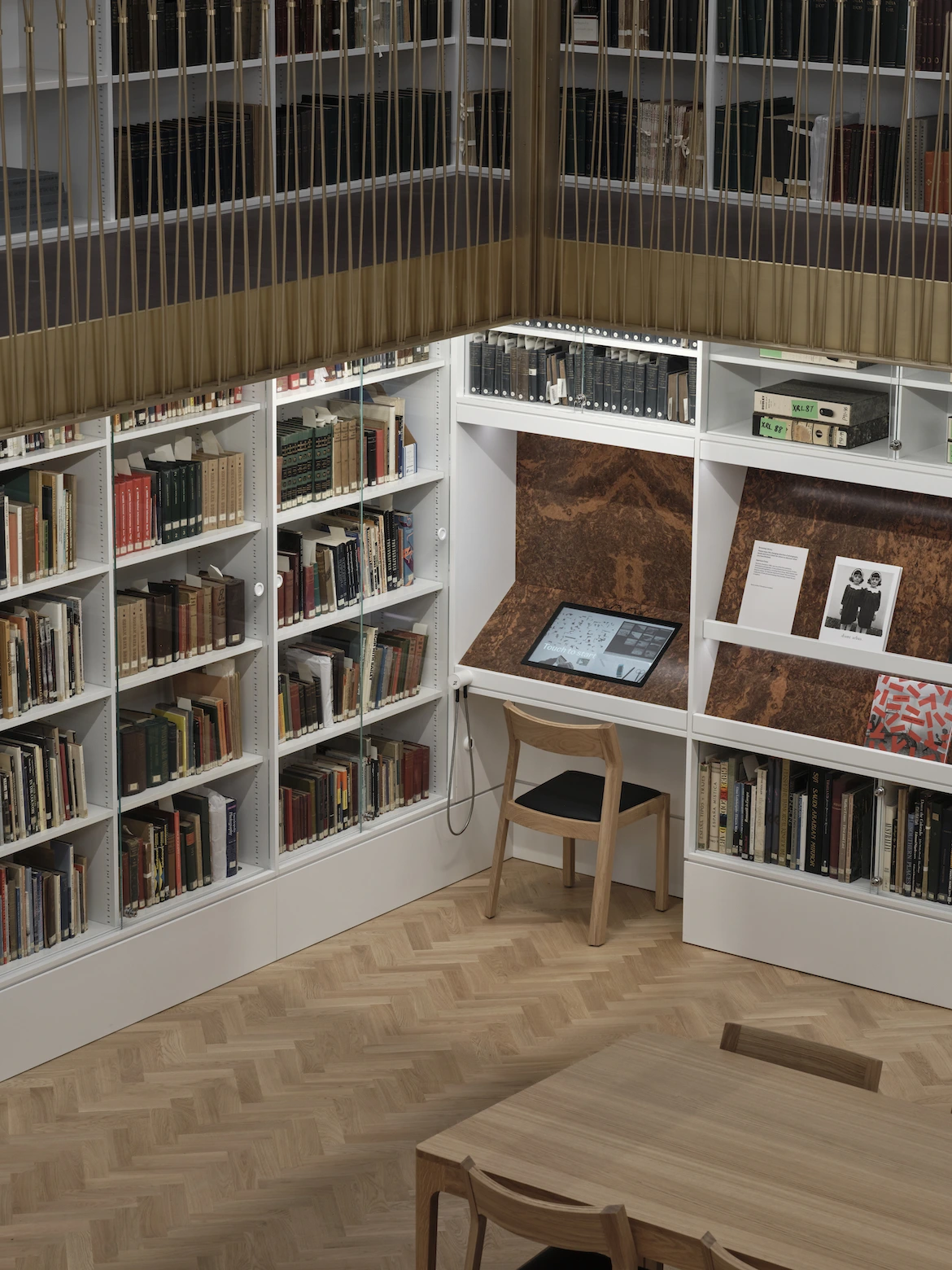
9
The second and final phase of the project yielded four new galleries as a fifth reworked gallery space. The new center spans more than 6,000 square feet. Photos © Jim Stephenson (5,6,8); Thomas Adank (7,9)
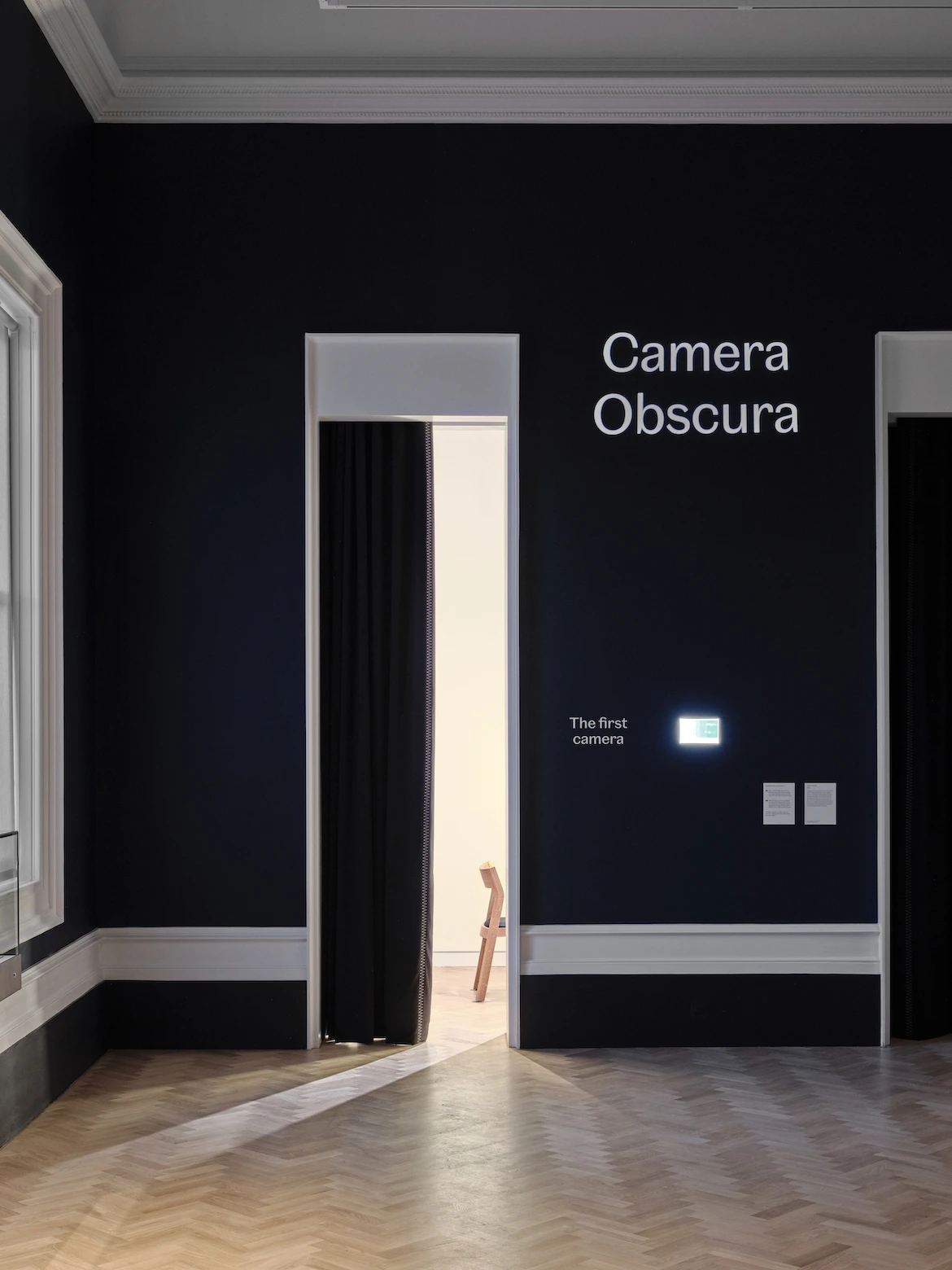
The center's camera obscura is fashioned out of a former janitorial closet. Photo © Thomas Adank
The galleries, designed to house thematic exhibitions utilizing the V&A’s collection, are more conventional. Much of the work, organized by conservation architects Purcell alongside Gibson Thornley, is intentionally invisible. Ventilation and climatic controls have been added into the ceiling and attic spaces, with new services running down the walls and concealed by a roughly 3-inch protruding plaster wall. But the fourth and final room in the series is a smallcoup de théâtre—a former closet for cleaning supplies that has been transformed into a camera obscura, enabling new visitors to experience, in very physical terms, the principles of photography.







